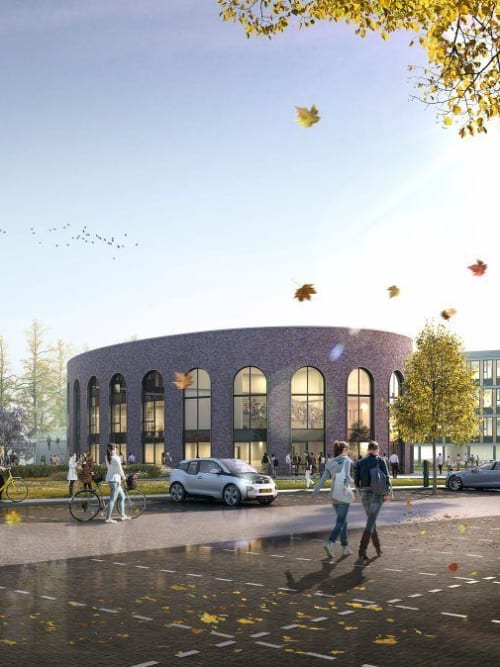HOW TO PREPARE EDUCATION
FOR A HYBRID FUTURE

The education field has done everything it can to get students and teachers to work together efficiently. This has been accompanied by the accelerated introduction of new forms of education and by innovative solutions. They obviously want to continue this, even as physical education slowly returns. The question is how institutions can make the best of both worlds and develop a hybrid environment. The foundation for this is a flexible yet robust and well secured IT infrastructure.
Consulting firm Turner conducted research earlier this year among 1,500 students and staff at three colleges and three universities. Fully online education has been a necessity for quite some time, but is far from ideal. The education sector is therefore looking for a mix between digital and physical. Consultancy.nl publishes parts of the research report, which shows that both students and teachers see many opportunities in "blended education". What comes to mind are more possibilities to offer customization, more accessible contact with tutors, more international education, new forms of education, extra flexibility and more efficiency. These are exactly the elements that appeal to students and that boost student experience. By realizing this with a flexible IT infrastructure, an educational institution can make a difference.
COMBINING ONLINE AND PHYSICAL EDUCATION
Students indicate that they no longer want to go back to full classroom or physical education. When they come to campus, it is not necessarily in large classrooms or lecture halls. Consider, for example, setting up flexible places where students can collaborate in groups in a focused manner. This does have major implications for the needs and requirements for IT support. Tutors, for their part, confirm that online education offers new opportunities. But then they want the right technological support, also and especially when they work from home. The bottom line is that institutions must ensure that the IT environment is flexible enough for them to:
- Provide some form of customized education.
- Enable tutors to combine online and physical education in an accessible and efficient way.
- Be able to streamline administrative processes to improve efficiency.
CREATING ADDED VALUE THROUGH COLLABORATION
Facilitating secure online collaboration is an important pillar in the blended learning environment. To make remote collaboration a success, the right tooling must be in place and implemented in the processes. A stand-alone solution for video conferencing and chats, for example, is not enough. The right integration and links with online learning environments, Learning Management Systems and Student Information Systems create real added value. Some of the benefits:
By integrating an environment for online collaboration with the CRM system, staff members have student data at their fingertips.
The administrative burden is reduced by managing the extensive inflow and outflow in education from a platform for collaboration. Both students and staff members work in the same environment
CLOUD AND SAAS APPLICATIONS
Optimizing remote collaboration should be supported by a network and Cloud environment that enables innovations. Precisely because many are working and teaching remotely, we are seeing a huge increase in demand for Cloud and SaaS applications. After all, Cloud and SaaS solutions allow to scale up quickly and you pay for what you consume; i.e. high flexibility. But don't forget to make your IT environment suitable for Cloud and SaaS and establish secure and high-quality connections. This way, you lay the foundation for further rollout of Cloud and SaaS solutions.
FLEXIBLE, AGILE AND SECURE
The network is growing into the pivot of the technological infrastructure at educational institutions. It is the network that enables innovation, provides access to information for all stakeholders and facilitates collaboration. Ideally, the network should grow and develop intuitively with the wishes and requirements of the organization. When it comes to performance, capacity, ease of management and security. In short, the network should not be a constraint that stands in the way of the strategic objectives of an educational institution. This can be achieved with Software Defined Networking (SDN). With SDN, you manage the network as a whole and not device by device, it has an overview and offers insight. It is based on an intelligent platform that automates tasks, translates policy and functionality into technology and collects and consolidates information. This is exactly what the education sector needs: flexibility to set up online collaboration, agility to realize innovation and at the same time optimally secured infrastructure to keep malicious agents out.
